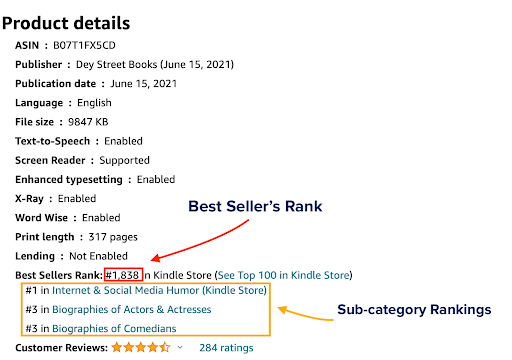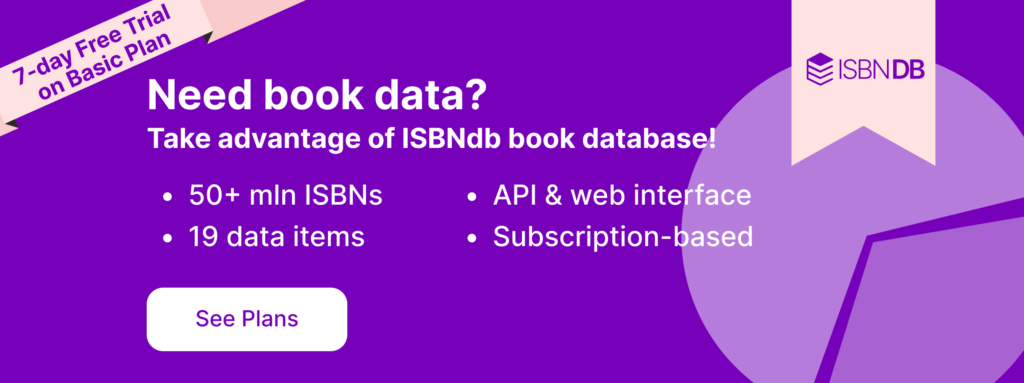
Data is everywhere, and people have never been more interested in gaining access to it. Yet, despite this abundance of data, sales figures can be hard to put your finger on. Book sales data is a prime example. Without some popular books being sold at thousands of stores, online outlets, and even audiobook sites, it can sometimes seem very difficult to pinpoint just how many copies a particular book has sold.
Fortunately, there are solutions. In this article, we’ll discuss some helpful strategies you can use to find sales data for any book.
- Reasons to Look for Book Sales Data
- Best Methods to Find Book Sales Data
- Using BookScan to Find Sales Data
- Other Ways to Guage a Book’s Popularity
Reasons to Look for Book Sales Data
Understanding book sales data extends beyond mere curiosity. It plays a crucial role in market research, competitive analysis, investment decisions, literary research, and more. For instance, publishers and literary agents will need direct access to book sales rankings if they want to assess an author’s market potential.
The same goes for stores and other business-to-business entities who want to ensure they’re stocking popular books – or pricing existing books appropriately. In short, you don’t need to be an author to want to know a given book’s sales data – you need to have any interest at all.
Best Methods to Find Book Sales Data
Compared to other media industries, such as music or film, there isn’t a single, universally accepted system for tracking book sales in real time. And with the rise of eBooks and audiobooks, tracking sales has become even more complicated. However, if the book has an ISBN, there are several ways to approach the problem.
1. Contact the Publisher or Author
Talking directly to the book’s publisher is an easy way to understand how well a book is doing in the market. The catch is that you probably won’t get precise sales numbers, as these are rarely even provided to the author. What you can get an idea of is how many books are being sent to stores, which shows how much interest there is in the title. Not every shipped book is a sold book, but – at least as far as the publisher is concerned – the result is roughly the same.
2. View the Sales Rankings
Digital platforms have revolutionized how we view book popularity. And while they are partially responsible for the difficulty involved in finding book sales data, they can also provide some semblance of a solution.
Most online retailers and distributors provide sales rankings, a relative measure that, without disclosing exact figures, indicates a book’s performance in the market. For instance, tools like Ingram’s automated stock check offer real-time data, and services such as Booktelligence provide analytical insights into these rankings, translating them into actionable intelligence.
3. WorldCat
WorldCat is a global catalog that lists the collections of libraries from around the world. It’s essentially a massive database that allows you to search for books, music, videos, and other materials in libraries near you or across the globe. Feel free to read our previous articles to learn more about the importance of book metadata and how to obtain book data via ISBN number.
By analyzing the presence of a book across library collections globally, you can pretty accurately infer its distribution and readership scale. Again, while this is not direct sales data, this approach provides a window into a book’s reach, popularity, and longevity.
4. Amazon Book Sales Calculators
As the largest bookstore on earth, Amazon’s system gives us a few methods to measure just how well a given book is selling. Using tools like sales rank calculators and APIs, you can figure out sales numbers from Amazon’s detailed ranking system.
These tools use Amazon’s constantly updating sales information to give a very current view of how a book is doing in the market. Still, as with the other solutions on this list, you’re only ballparking the figure. It is also only really effective for Amazon-exclusive books.
5. Nielsen BookScan
Nielsen BookScan is a service that tracks book sales across a wide range of retail outlets, providing detailed and comprehensive data on how books are selling. BookScan is currently considered the top method for tracking book sale data, and it is frequently used to create bestseller lists and spot industry trends.
Although subscribing to BookScan is expensive, the detailed and useful data it provides is worth the cost for those in the publishing and retail industries.
Let’s look a little bit deeper into this helpful tool.
Using BookScan to Find Sales Data
Neilsen is the same company that tracks viewership data for the broadcasting industry, so it is well-suited to dealing with vast amounts of complicated data. Since its introduction in 2001, BookScan has become vital to the book industry, tracking over 85% of print book sales in the U.S. and collecting sales from thousands of retailers.
However, while BookScan is essential for publishers, authors, and businesses who want to understand what readers are buying and why, a single year’s subscription costs around $2,500. If you are a successful bookstore owner or B2B business, you might be able to justify such an expenditure. But this price would seem pretty absurd if you are a smaller player or just an interested book-lover.
The good news? There are other ways to get similar data for those who can’t afford BookScan. For instance, Amazon Author Central offers authors free access to BookScan data for their own books. This helps authors track their sales, see market trends, and plan their strategies. This brings us back to our very first point: contact the publisher or author.
On the off chance the writer has utilized Amazon’s service, they could provide you with extremely accurate and up-to-date book sales data.
Other Ways to Guage a Book’s Popularity
While Nielsen’s BookScan is essential for industry analysis, social media, reader reviews, and online forums can offer detailed information about a book’s success and how audiences feel about it.
For businesses, entrepreneurs, and new companies in the book world, using these different tools together can give them a significant advantage. Looking at sales data, trends, what consumers like, and what competitors are doing can help us make smarter decisions about starting a business, creating products, and marketing them.
Conclusion
Looking for accurate book sales data comes with challenges, but it’s possible. By using direct questions, sales rankings, library databases, and tools like BookScan, virtually anyone can get a good idea of how many copies a particular book is selling. For businesses, entrepreneurs, and startups, this information is crucial to understanding how the market works, spotting opportunities, and making intelligent choices.
As the publishing world changes, the ways to track book sales may also improve. For now, the tools listed here are useful, even if they’re imperfect. If you’re interested in further optimizing your book-related research and organization, check out our posts on Book Tracking Apps & Websites and The Best Book Summary Websites & Apps to discover more ways to streamline your reading and book management.








